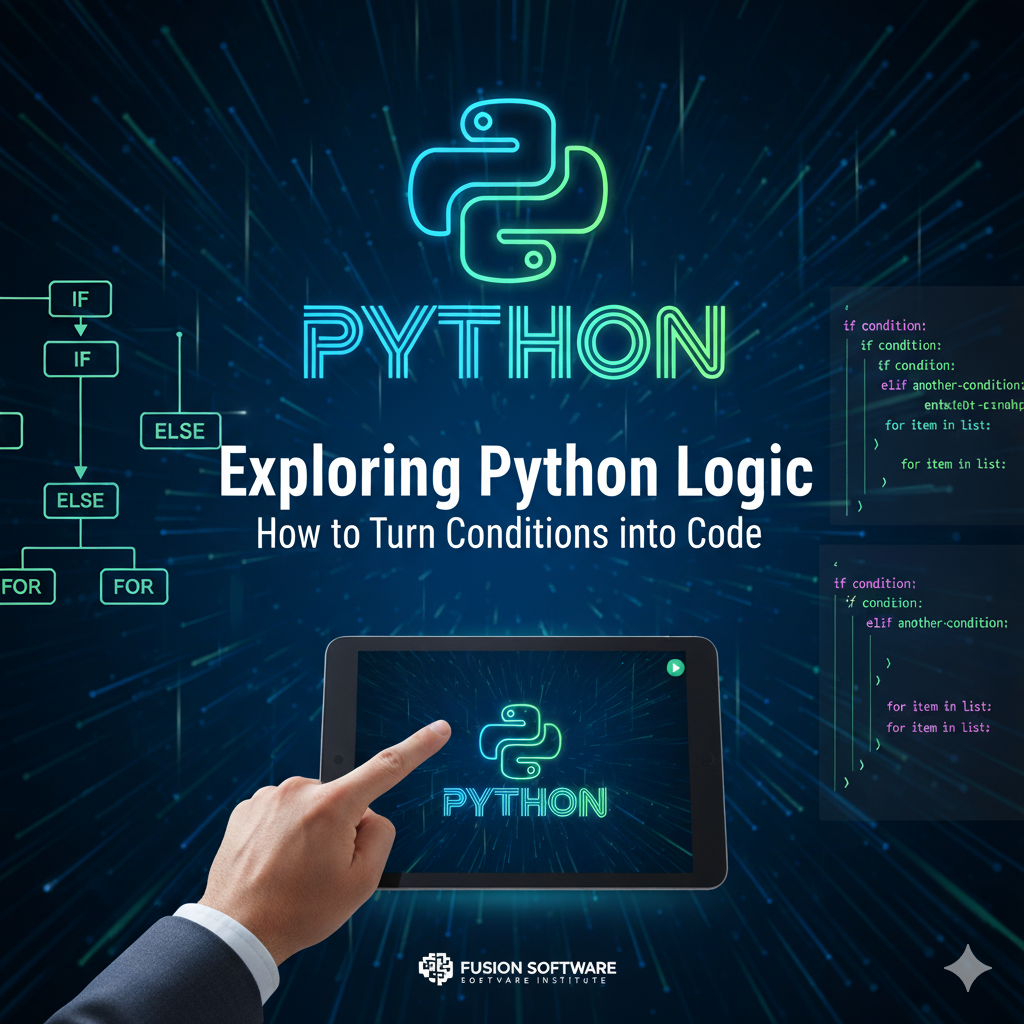When learning Python, one of the most essential concepts to understand is decision making. Decision making is what allows a program to react to different situations instead of following a single, fixed path. It’s how Python “thinks” and decides what to do based on certain rules or conditions.
Read More: Exploring Python Logic: How to Turn Conditions into Code
In simple terms, turning conditions into code means teaching your program how to respond when something is true or false. This logical thinking is the foundation of all programming, from simple tasks like checking passwords to complex applications like artificial intelligence.
Understanding Conditions in Python
A condition in Python is a statement that can be evaluated as true or false. It is the basic building block of decision-making. For example, when a program needs to determine whether a user is old enough to access a website, it checks the condition related to age.
Conditions are created using comparison and logical reasoning. Python uses various comparison operators to compare values, such as checking if something is equal, greater, or smaller than another value. Logical operators then combine multiple conditions to form more complex rules.
The goal of conditions is simple: they allow the program to choose what happens next. When a condition is true, Python performs one action. When it’s false, it performs another. This ability to evaluate situations and act accordingly gives programs flexibility and intelligence.
The Role of Decision Making
In real life, we make decisions every day based on conditions — for example, deciding to carry an umbrella if the weather forecast predicts rain. Similarly, Python uses decision-making statements to perform certain actions only when specific conditions are met.
This process is called conditional logic. It helps Python programs behave differently depending on the data or situation. By applying conditional logic, a single program can handle a wide range of scenarios, making it efficient and adaptable.
How Python Handles Decisions
Python uses structured statements to manage decision making. Each decision starts by checking whether a condition is true or false. If the condition is true, the program follows one path. If it’s false, the program may choose another path or simply stop that part of the process.
These decisions allow programs to act intelligently. For example, a program can verify whether a form has been filled out correctly, control access to information, or respond to different user choices. Without decision making, programs would act in the same way every time, ignoring changes in data or user input.
Combining and Layering Conditions
In many situations, decisions are not based on a single rule. For instance, a program might need to check multiple factors before proceeding — such as whether a user is logged in and whether they have permission to view certain content.
Python allows multiple conditions to be combined. Logical operators such as “and,” “or,” and “not” are used to connect these conditions, making it possible to test several situations at once. This approach allows programmers to create more precise and complex decision-making logic.
Conditions can also be layered, meaning one decision depends on another. For example, if one rule is true, the program might check another rule before acting. This layered or nested logic helps the program handle complex decision trees effectively.
Why Decision Making Is Important
Decision making is a key concept in all areas of programming. It makes software interactive, responsive, and intelligent. With conditional logic, programs can:
-
React differently to various inputs.
-
Handle exceptions and errors smoothly.
-
Automate routine checks and tasks.
-
Improve user experience through dynamic responses.
-
Support complex systems such as authentication, recommendation engines, and data analysis.
Without decision making, Python programs would be static and predictable, unable to adapt to the real world.
Thinking Like a Programmer
Learning to use conditions effectively helps new programmers develop logical thinking skills. It trains the mind to break problems into smaller decisions and define what should happen in each case. Every decision in a Python program represents a piece of reasoning. By combining many small logical steps, programmers can create powerful systems that behave intelligently and make accurate decisions automatically.
Visit Here: https://www.fusion-institute.com/turning-conditions-into-code-python-decision-making-uncovered
Final Thoughts
Turning conditions into code is at the heart of Python logic. It transforms simple instructions into dynamic actions that respond to changing information. Understanding how to structure decisions, combine conditions, and think logically is one of the most valuable skills in Python programming. By mastering Python’s decision-making concepts, you unlock the ability to create smarter, more responsive programs that can reason, adapt, and evolve just like a human making choices in everyday life.



